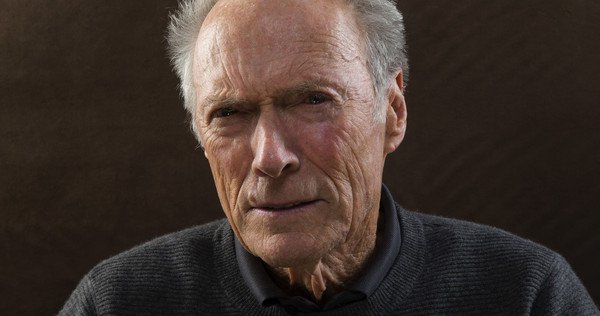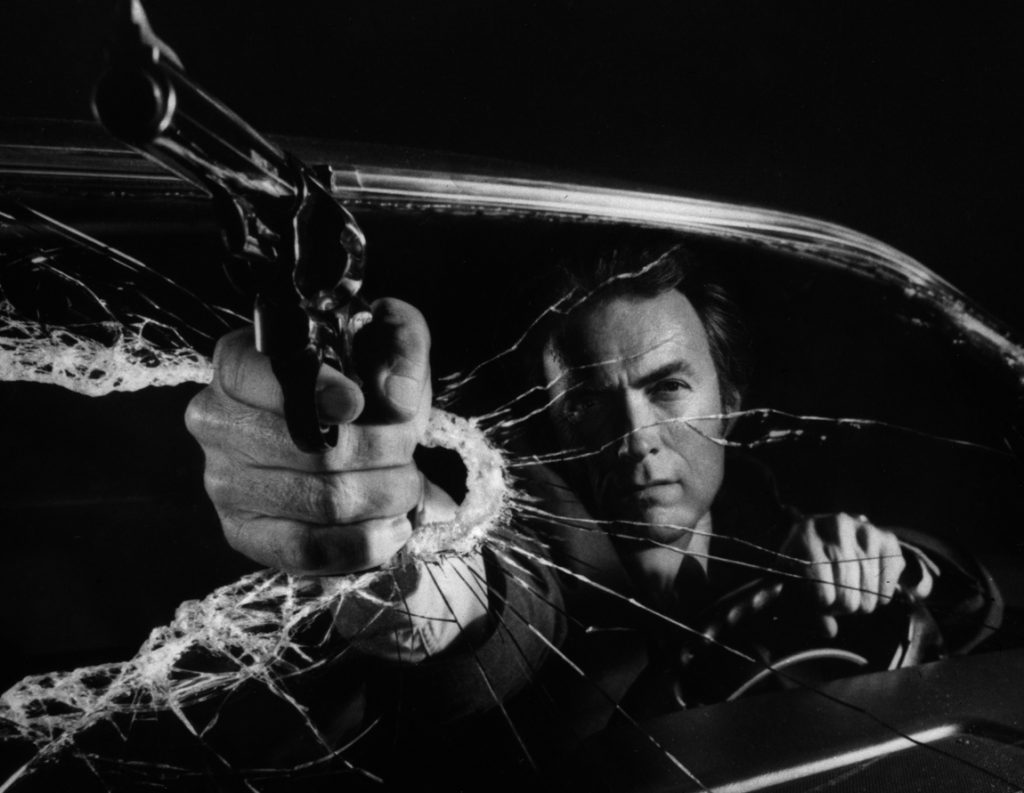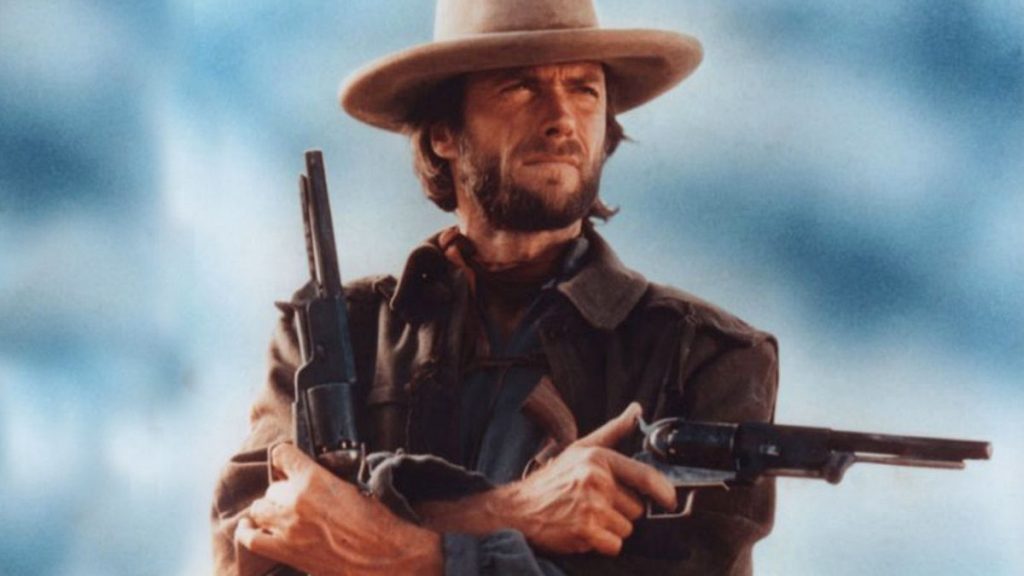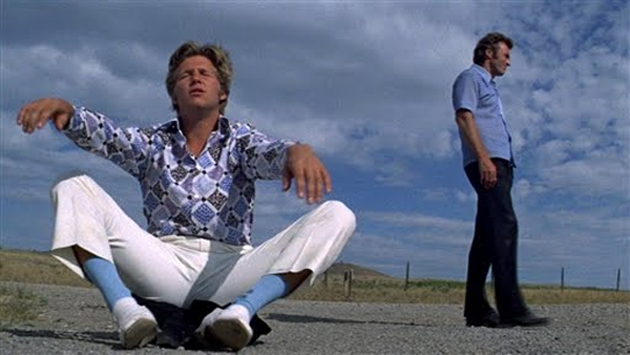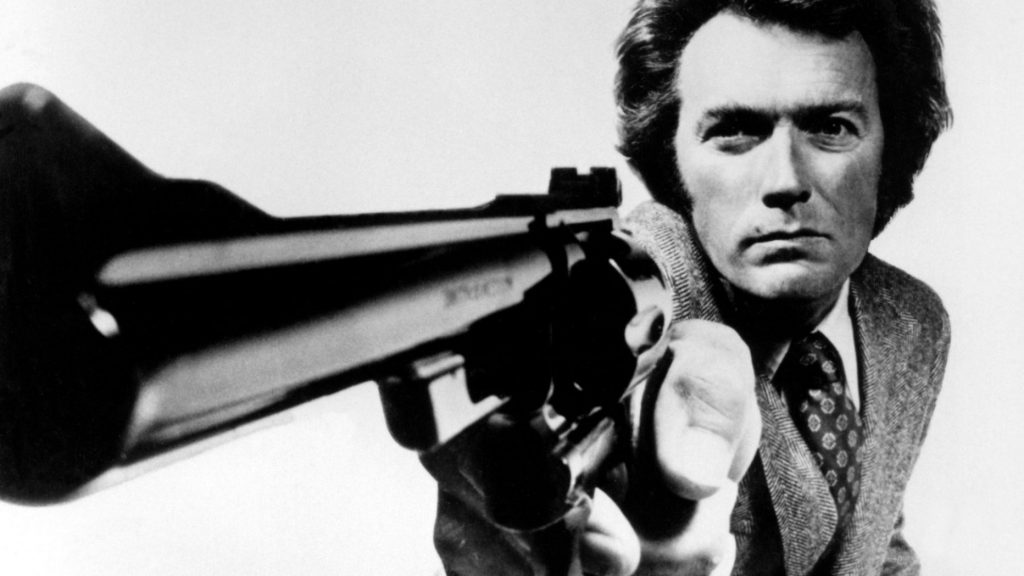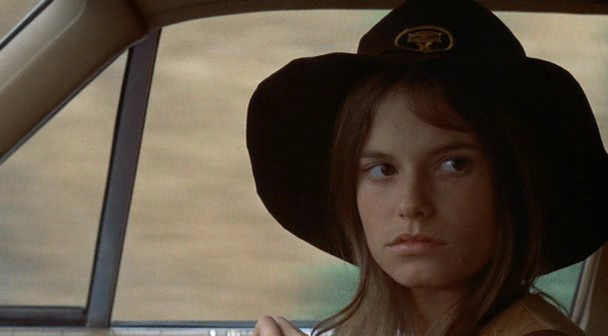EVERY WHICH WAY BUT LOOSE (1978)
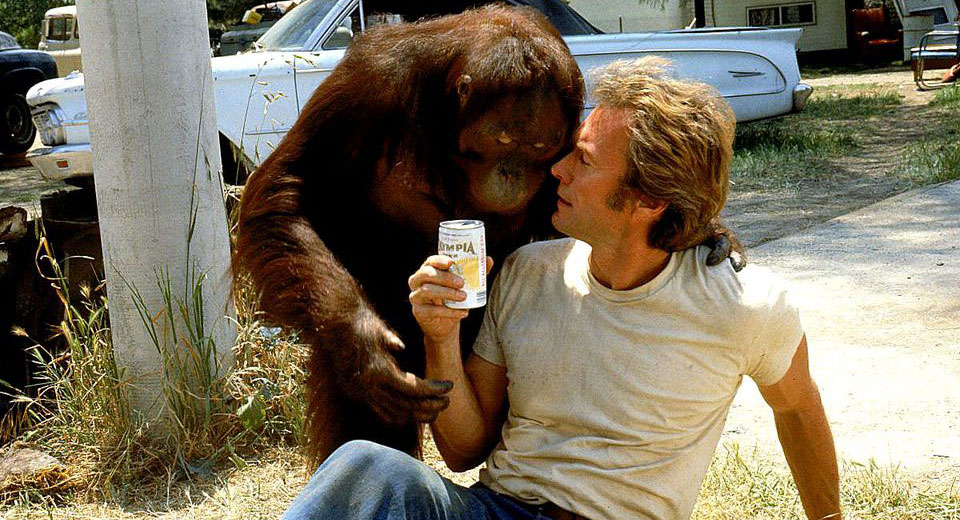
“I’m not afraid of any man, but when it comes to sharing my feelings with a woman, my stomach turns to royal gelatin.” – Philo Beddoe
Every Which Way but Loose is often cited as one of the oddest entries in Eastwood’s catalogue. It’s also the highest-grossing hit of his career, even when adjusted for inflation. The film reunites Eastwood with his former costars Geoffrey Lewis (from Thunderbolt and Lightfoot) and Sondra Locke (who was quickly becoming a staple of Eastwood’s material). It also pairs him up with Academy Award Winner Ruth Gordon and an infectiously entertaining orangutan named “Clyde”. Clyde is most definitely a scene-stealer (although rumors of mistreatment by his trainer sour the fun of the film more than a little bit).
The story involves a blue-collar trucker named Philo Beddoe (Eastwood) who makes extra money on the side bare-knuckle brawling in underground fighting rings. He’s frequently compared to the legend of that arena, Tank Murdock, who he dreams of someday getting the chance to defeat. After Beddoe meets the lovely and mysterious country singer Lynn Halsey-Taylor (Locke), he sets aside nearly all priorities to pursue her and woo her. The somewhat zany antics that he and his buddy Orville (Lewis), not to mention the ever-present Clyde, encounter along the way make up the bulk of the narrative of the film (and nearly all of the fun). Both the romance and the fighting plotlines take some surprising turns adding up to a genuinely entertaining (if still vitally flawed) film.
Every Which Way but Loose is constantly referred to as a “change of pace” or “uncharacteristic” for Eastwood. But I found that designation puzzling after viewing his first 20+ films. True, it isn’t as dark or violent as the Dirty Harry films or any of Eastwood’s westerns, and it doesn’t feature ambitious action sequences like The Eiger Sanction or The Gauntlet. But apart from the overtly comedic elements (of which there are a multitude), this feels almost like textbook Eastwood material. Eastwood is once again playing a no-nonsense tough guy, who frequently scores with the ladies and embodies an almost western-style machismo.
The comedy is certainly uncharacteristic for Eastwood (the closest he’d come to it before was the disastrous Paint Your Wagon), but Eastwood spends most of the narrative as the straight man, allowing the eccentric Ruth Gordon, Clyde, and Geoffrey Lewis to handle most of the comedy. Eastwood is so firmly a man’s-man in this film that it almost becomes absurd how skilled he is as a brawler. Even the resolution to the final fight – which attempts to add some unexpected flavor to the character – feels so unearned and predictable as to be laughable rather than admirable.
As for the supporting cast, everyone is delivering solid work. Gordon had won an Oscar for Rosemary’s Baby and she brings the full force of her absurd-but-believable comedic powers to this role. Lewis is given a greater chance to play with different character beats – all of which he deftly handles – and the endearing orangutan Clyde is as charming as you’d expect him to be. Locke, who delivered a remarkable performance in The Gauntlet, stretches herself performance-wise by showing off her singing chops, but otherwise brings a similar catalogue of character choices to the role. It’s not a step down from The Gauntlet for her, but amidst a collection of stronger fellow supporting players, she doesn’t stand out quite as much as she did in Gauntlet.
Eastwood was advised against making this film and – as he usually did – he trusted his instincts more than the voices of his advisors. He didn’t direct the film, though. Those duties fell once again to James Fargo, who had directed Eastwood – if that’s what you can call it – in The Enforcer. There are no apparent rumors of on-set drama this time around and the resulting film was wholeheartedly embraced by audiences despite only being met with lackluster reviews from critics.
It also launched a series of more family-friendly and accessible films which would represent one of the most surprising and interesting periods in Eastwood’s filmography. The film remains the biggest money-maker of Eastwood’s career (and in the top 200 biggest box offices in cinema history). Having now seen the film, I’m uncertain it deserves that particular pedigree, but it is undeniably charming in its own way… or, every which way… something like that. You know what I mean.
 Reed Lackey is based in Los Angeles, where he writes and podcasts about film and faith. His primary work is featured on the More Than One Lesson website and podcast, as well as his primary podcast, The Fear of God (which examines the intersection between Christianity and the horror genre). Follow him on Twitter or on Facebook to receive updates on his reviews and editorials.
Reed Lackey is based in Los Angeles, where he writes and podcasts about film and faith. His primary work is featured on the More Than One Lesson website and podcast, as well as his primary podcast, The Fear of God (which examines the intersection between Christianity and the horror genre). Follow him on Twitter or on Facebook to receive updates on his reviews and editorials.


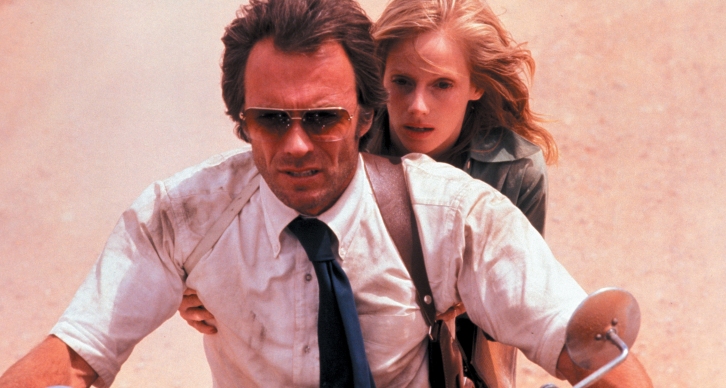
 Aaron White is a Seattle-based film critic and co-creator/co-host of the Feelin’ Film Podcast. He is also a member of the
Aaron White is a Seattle-based film critic and co-creator/co-host of the Feelin’ Film Podcast. He is also a member of the 